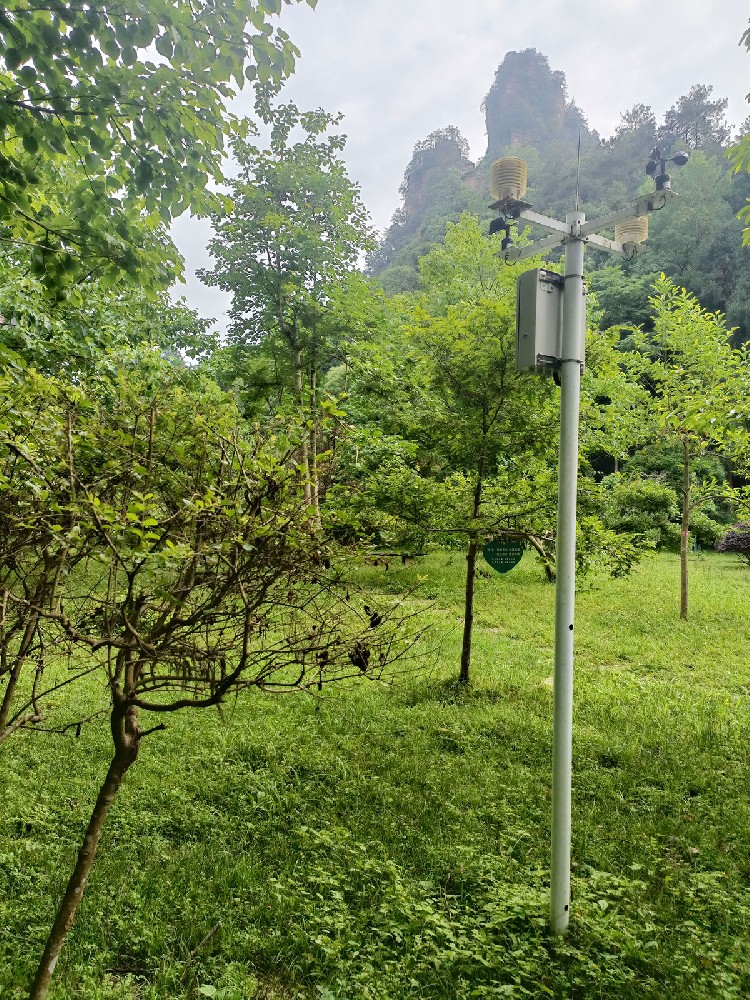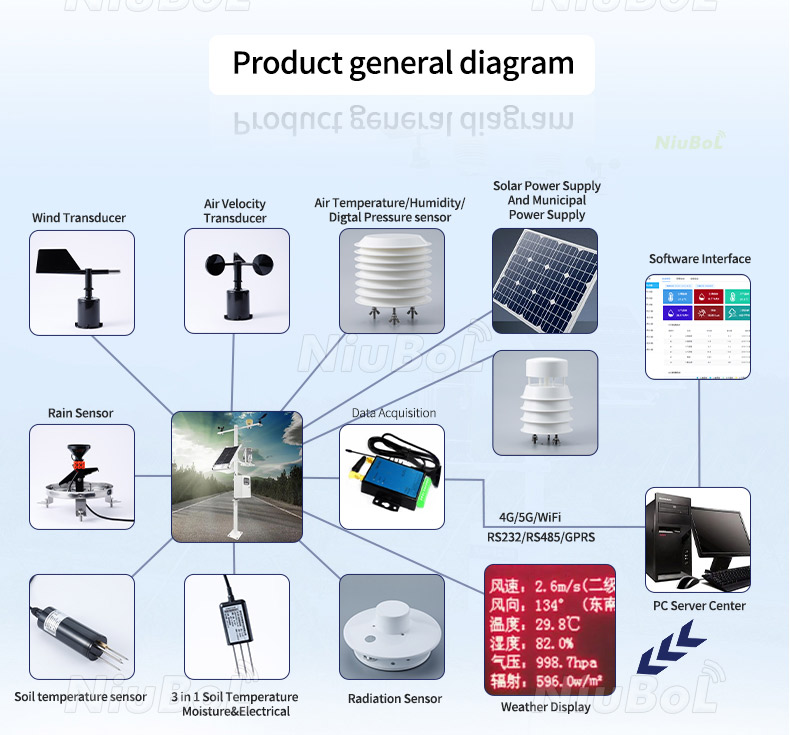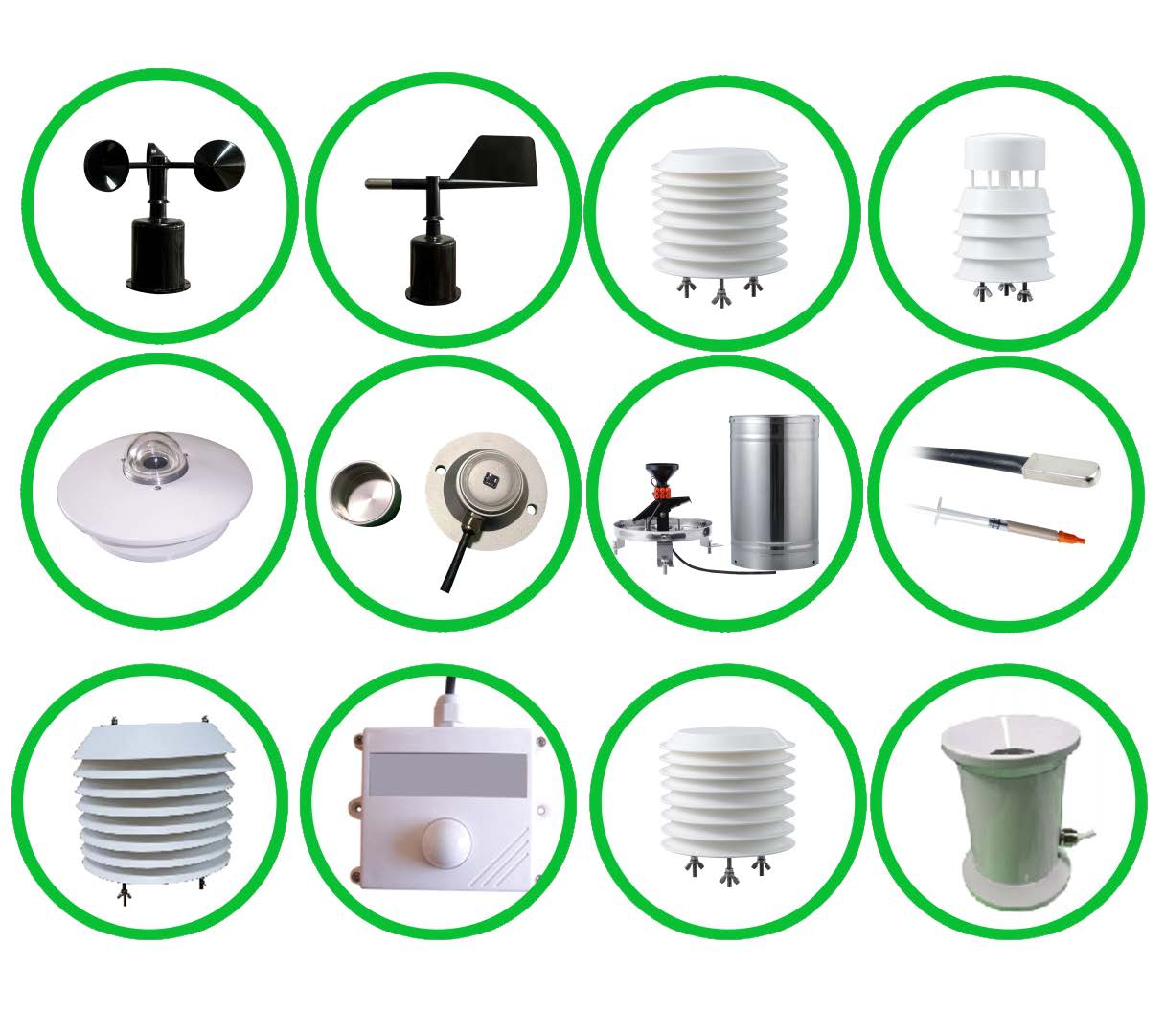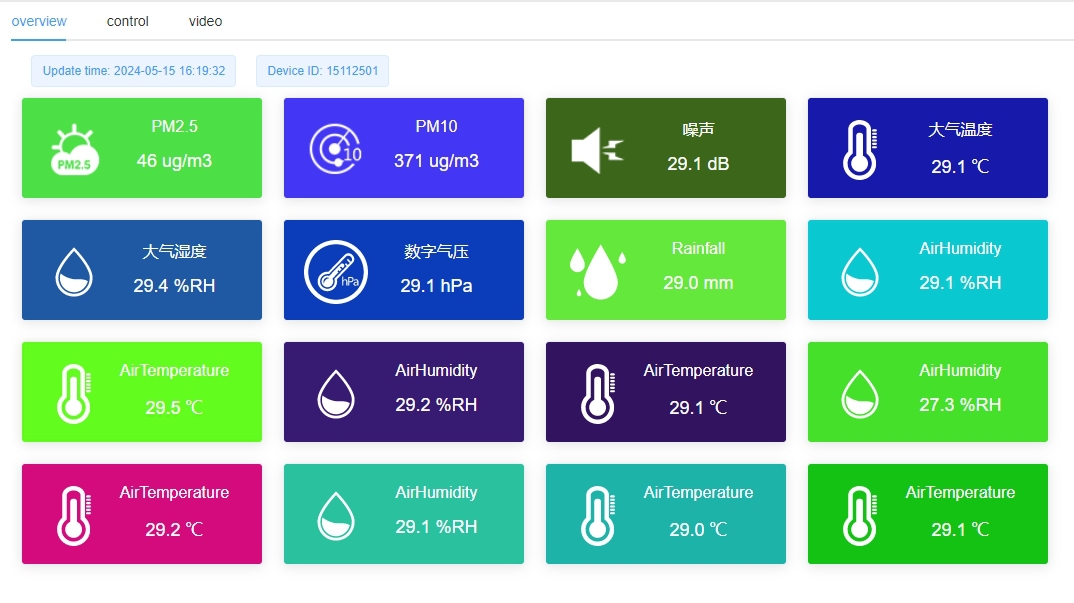

— Blogs —
—Products—
 Consumer hotline +8618073152920
Consumer hotline +8618073152920 WhatsApp:+8615367865107
Address:Room 102, District D, Houhu Industrial Park, Yuelu District, Changsha City, Hunan Province, China
Product knowledge
Time:2025-11-24 17:20:50 Popularity:2
An automatic weather station (AWS) is a modern meteorological monitoring system that integrates sensors, data acquisition, intelligent processing, and remote monitoring. In forestry applications, it continuously and automatically collects critical parameters such as temperature, humidity, wind speed, wind direction, atmospheric pressure, and precipitation in real time, delivering scientific decision-making support for forest management.
Meteorological conditions directly affect tree growth, reproduction, pest outbreaks, and natural disasters like forest fires. Traditional manual observation suffers from long intervals, high error rates, and data lag. Automatic weather stations enable 24/7 precise, continuous monitoring, providing reliable technical support for forestry ecological monitoring and disaster prevention/mitigation.

Real-time data collection via temperature, humidity, pressure, wind, and rainfall sensors.
Raw data is filtered, calibrated, processed, and locally stored by the acquisition unit to ensure accuracy and integrity.
Real-time trend analysis detects drought, high winds, extreme heat, etc., and triggers alarms to alert forestry personnel.
Data uploaded via 4G/5G, LoRa, or satellite to cloud platforms for remote access and analysis.

- Sensor Module: Temperature, humidity, wind speed/direction, pressure, rainfall, optional soil moisture.
- Data Acquisition & Processing Module: Calibration, storage, and intelligent analysis.
- Power System: Solar panels + battery for fully independent operation.
- Communication Module: 4G/5G, LoRa, satellite, or wired network.
- Support Structure: Tower or pole ensuring unobstructed sensor exposure.
- Air quality sensors (PM2.5, PM10, CO₂) for comprehensive environmental monitoring.
- Multi-depth soil temperature/humidity sensors for precision irrigation.

| Parameter | Measurement Method | Accuracy |
| Temperature | Thermistor or PT100 | ±0.2℃ |
| Humidity | Capacitive sensor | ±3% RH |
| Wind Speed | Ultrasonic or anemometer cups | ±0.3 m/s |
| Wind Direction | Vane or ultrasonic | ±3° |
| Atmospheric Pressure | Piezoresistive/Capacitive | ±1.5 hPa |
| Precipitation | Tipping-bucket rain gauge | ±4% |
| Soil Moisture | Capacitive/Conductivity | ±3% |
- Lightning, wind, and rain protection.
- Wide operating temperature: -40℃ to +70℃.
- Anti-wildlife design (bird-proof, rodent-resistant).
Installation & Maintenance Tips:
- Regular calibration, clean rain gauges and solar panels, inspect structural stability.
- Keep spare parts: anemometer cups, tipping buckets, batteries.

Representative open areas; wind sensors ~10 m height; avoid valleys or dense canopy.
Sturdy, wind-resistant towers; keep rain gauge level and sensors unobstructed.
Solar panels in full sun; antennas clear of interference.
Multiple stations in large forests for regional coverage.
| Fault | Possible Cause | Solution |
| Abnormal data | Sensor contamination/loose | Clean sensor, check connections |
| Data loss | Communication failure | Check network, antenna, reboot |
| Power failure | Battery aging/shading | Replace battery, reposition panel |
| Wind abnormality | Cup blockage/damage | Clean or replace wind sensor |
| Rain gauge failure | Blockage or tilt | Clean and level gauge |
| Data drift | Long-term uncalibrated | Re-calibrate or update firmware |

Track tree growth, physiology, and pest/disease patterns.
Early warning for drought, frost, high winds, and fire risk.
Scientific afforestation, tending, harvesting, and irrigation plans.
Long-term data for studying forest ecosystems and climate trends.
- Small forests: Basic model (temp/humidity, wind, rain).
- Medium forests/research: Standard model with soil moisture, pressure, and remote transmission.
- Large forests/disaster prevention: High-precision model with full auto-analysis, intelligent alerts, cloud management.
| Type | Functions | Accuracy | Data Analysis | Communication | Suitable Scenarios |
| Basic | Temp/humidity, wind, precipitation | ±2–5% | Manual | Wired/short-range | Small forest areas |
| Standard | Soil moisture, pressure | ±2–3% | Semi-automatic | 4G/5G/LoRa | Medium forests & research |
| High-Precision | All parameters + AI warning + cloud | ±1–2% | Fully automatic | Real-time cloud | Large forests & disaster prevention |

Yes — solar + battery ensures continuous operation.
Yes — via web or mobile APP using 4G/5G or LoRa.
~10 m height in open area for accurate readings.
Install level and clean leaves/dust regularly.

10–30 cm or deeper depending on model.
Check connection and recover from local storage.
High-precision models operate from -40℃ to +70℃.
Yes — combines wind, temperature, humidity, and AI algorithms.
Quick installation; only periodic inspections needed.
Based on forest size, required parameters, budget, and disaster-prevention needs.
NiuBoL automatic weather stations deliver high-precision, continuous monitoring of temperature, humidity, wind, precipitation, soil moisture, and more in forestry environments. They significantly enhance scientific management, precision, and effectiveness while playing a vital role in forest fire warning, disaster prevention, and ecological monitoring. Through intelligent analysis and remote management, forestry departments can develop more efficient afforestation, tending, harvesting, and disaster-response strategies, achieving sustainable forest resource utilization. As technology advances, automatic weather stations will become even more indispensable in ecological protection and smart forestry management.
Related recommendations
Sensors & Weather Stations Catalog
Agriculture Sensors and Weather Stations Catalog-NiuBoL.pdf
Weather Stations Catalog-NiuBoL.pdf
Related products
 Combined air temperature and relative humidity sensor
Combined air temperature and relative humidity sensor Soil Moisture Temperature sensor for irrigation
Soil Moisture Temperature sensor for irrigation Soil pH sensor RS485 soil Testing instrument soil ph meter for agriculture
Soil pH sensor RS485 soil Testing instrument soil ph meter for agriculture Wind Speed sensor Output Modbus/RS485/Analog/0-5V/4-20mA
Wind Speed sensor Output Modbus/RS485/Analog/0-5V/4-20mA Tipping bucket rain gauge for weather monitoring auto rainfall sensor RS485/Outdoor/stainless steel
Tipping bucket rain gauge for weather monitoring auto rainfall sensor RS485/Outdoor/stainless steel Pyranometer Solar Radiation Sensor 4-20mA/RS485
Pyranometer Solar Radiation Sensor 4-20mA/RS485
Screenshot, WhatsApp to identify the QR code
WhatsApp number:+8615367865107
(Click on WhatsApp to copy and add friends)
